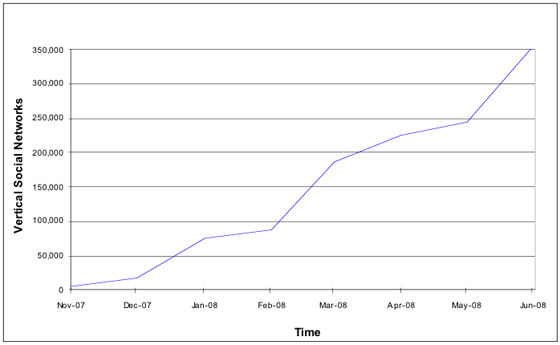 Adam Penenberg of Fast Company got lots of well-deserved grief for his cover article about Ning last month, the one that focused on the Andreessen and Bianchini duo’s “viral expansion loops”.
Adam Penenberg of Fast Company got lots of well-deserved grief for his cover article about Ning last month, the one that focused on the Andreessen and Bianchini duo’s “viral expansion loops”.
The overly simple idea behind those loops is this: members join a service and then invite their friends. Rinse and repeat, and you’ve got exponential growth rates.
Things aren’t quite so simple and straightforward (factors like stickiness come into play), but there is a good deal of truth to the idea that users beget users, especially when a mass of them holds a certain value (the so-called “network effect”). So it would come as no surprise if one of Ning’s competitors decided to claim even stronger viral expansion loops.
Grouply, a broad social network divided into groups that are built on top of those found at Yahoo, is making such a claim. Assuming the concepts of groups and networks are tantamount, Grouply claims to have passed Ning, last reported to have 230,000+ networks, with its 300,000+ groups (see chart below). And Grouply is owing its success to the symbiotic (or parasitic?) relationship it has established with Yahoo.

When Grouply started off, it was mainly a tool for members of multiple Yahoo groups to keep track of their activities. It then evolved into a more distinct social networking platform by expanding the ways in which members could interact onsite, thereby bringing it into closer competition with Ning. But while networks on Ning are built from scratch, groups on Grouply must be identified from the start with groups on Yahoo.
This is a double-edged sword to growth. On the one hand, non-Yahoo users will fail to find Grouply as an appealing place to start their niche networks. But Yahoo groups users will find it exceedingly appealing to do so, and it’s that special appeal that boosts Grouply’s adoption rate.
During the Grouply setup process, members of a particular Yahoo group can be sent invites to the new Grouply group (a practice that has led many to accuse Grouply of spamming). Regardless of how enthusiastically Grouply users actually push their new creations, they benefit from the previously formed communities on Yahoo because they can invite members over to the new and improved party. Such well-targeted invitations are why Grouply can assert that it possesses superior viral expansion loops.
So great, Grouply claims to have one-uped Ning. But there’s still a concern over the actual quality of these networks and groups. How many people belong to them on average? How active are their users? How long do those users actually stick around? And what are they up to? No one really knows, outside of the companies themselves. What I’d like to see are companies divulging great levels of detail regarding their usage statistics. That way we can truly gauge the relative success of these social platforms, the proliferation of which continues every day.